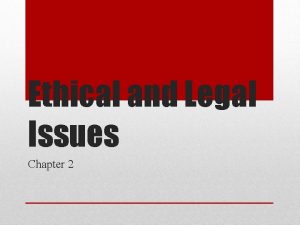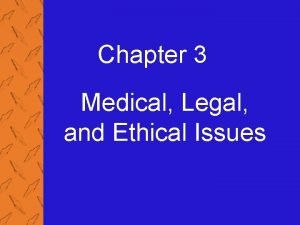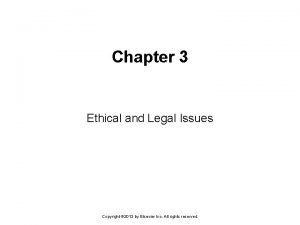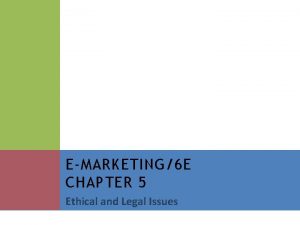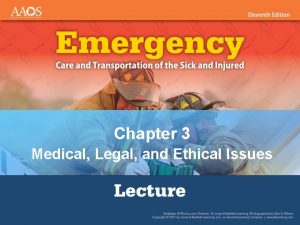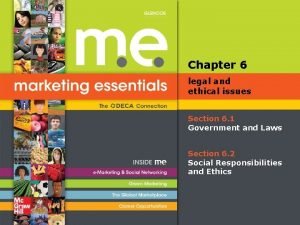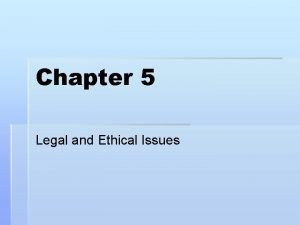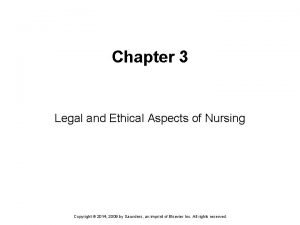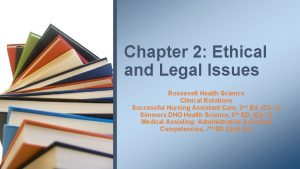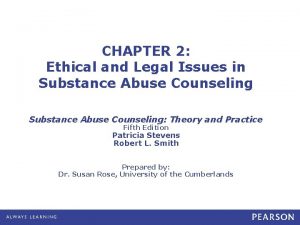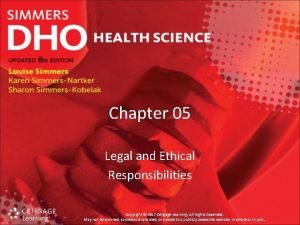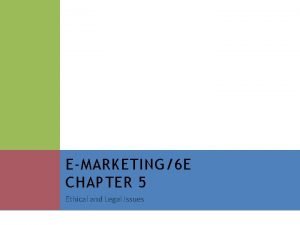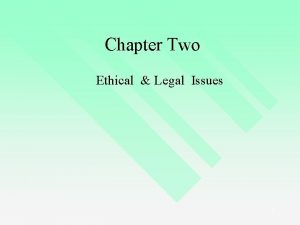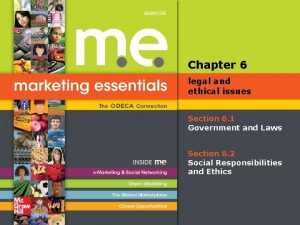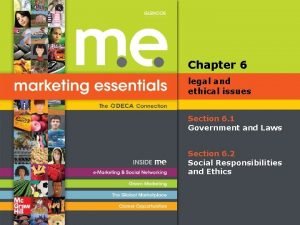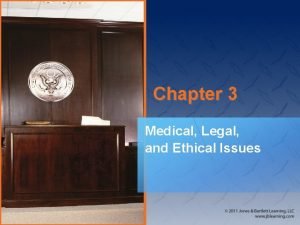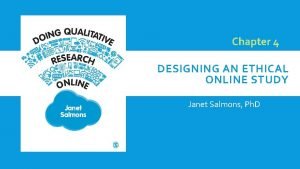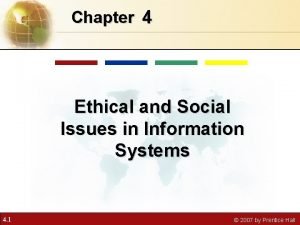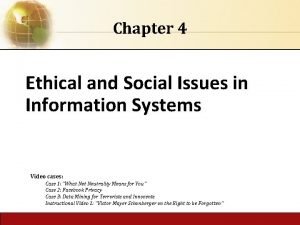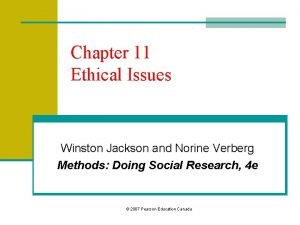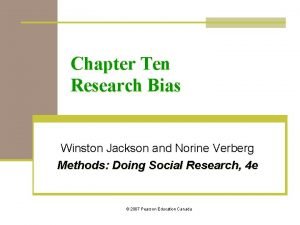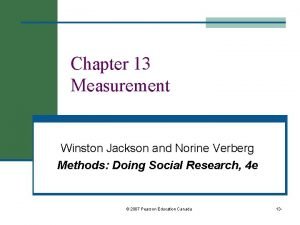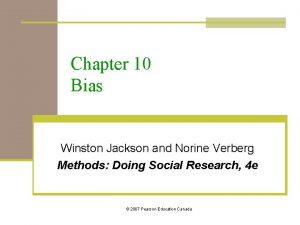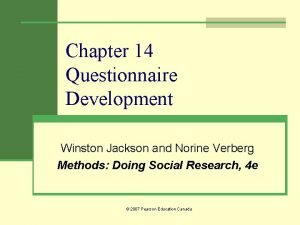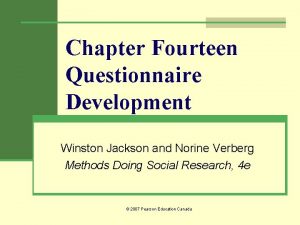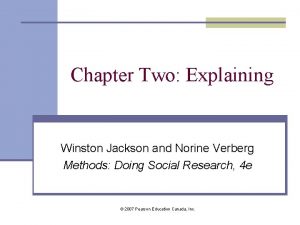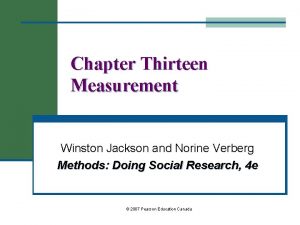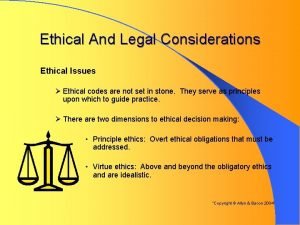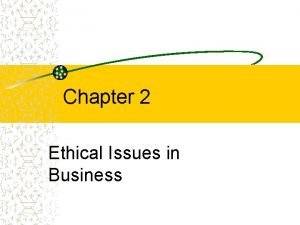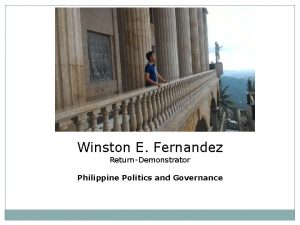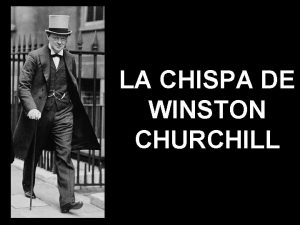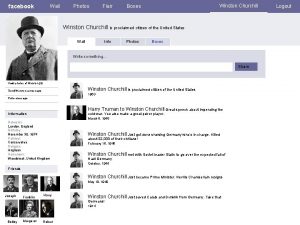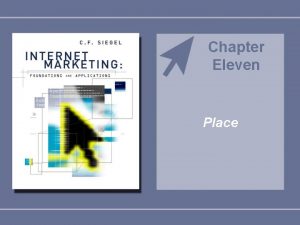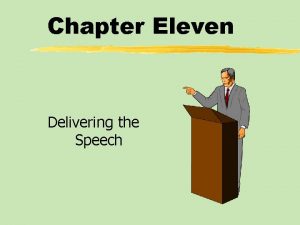Chapter Eleven Ethical Issues Winston Jackson and Norine






















- Slides: 22

Chapter Eleven Ethical Issues Winston Jackson and Norine Verberg Methods: Doing Social Research, 4 e © 2007 Pearson Education Canada

Ethical Issues in Social Research n Conflicting pressures: researcher torn between using the “ideal” design (technical merit of research) and a less effective design that respects the rights of participants n Is the research design ethically acceptable? n Two studies - become landmark in the discussion of research ethics n n Laud Humphreys: Tearoom Trade Stanley Milgram: Behavioural Study of Obedience © 2007 Pearson Education Canada

Humphreys: Tearoom Trade Laud Humphrey’s classic study, Tearoom Trade (1970), was a study of “sexual deviance” n Two parts to the research 1. Covert observational study of impersonal sex among men in public restrooms n n 2. “Health survey” n n Adopted “watchqueen” role to allow observation Involved the men who participated in the tearoom in a legitimate study to gather personal information The men did not know that they were part of a research project focused on sexual deviance © 2007 Pearson Education Canada

Humphreys (cont’d) n While observing sexual encounters, Humpheys documented the men’s license plate number Used license numbers to get names and addresses of participants n Police contact: claimed to be “market research” n n Participant list kept in safety deposit box n Included the men in a health survey of men (being conducted by other researchers) n Interviewed them at their home; to conceal identity, he wore different clothes, used a different car © 2007 Pearson Education Canada

Humphreys (cont’d) n Survey had questions on family background, personal health and social histories, SES, religious affiliation, socio-political attitudes, friendship networks, marital relations and sex n n No questions about homosexuality Final sample was 50 deviant/ 50 matched n Findings n Participants came from all walks of life, most married, primarily heterosexual: a search for fast, exciting, impersonal sex © 2007 Pearson Education Canada

4 procedures raise ethical issues 1. Researcher acted as a lookout, alerting participants engaged in an illegal activity of any impending danger 2. Unknown to the subjects, the researcher noted the licence numbers of their cars 3. Licence numbers were traced to reveal name and address of each car owner 4. Traced participants were interviewed as part of a larger public health survey (true purpose to their participant not revealed) © 2007 Pearson Education Canada

The Fallout. . . debate on research ethics n Gouldner: tries to block Humphreys from getting Ph. D. on ethical grounds n Horowitz & Rainwater: Humphreys was entitled to do the observations…the tactic was necessary for the project…how were the subject’s right to privacy violated? n Donald P. Warwick: Warwick 3 objections n n n Took advantage of powerless group Portrays researchers as “sly tricksters” Use of deception unacceptable © 2007 Pearson Education Canada

Four ethical problems A. Aiding a crime n Since the Missouri law forbid homosexual activity by acting as a lookout (i. e. , the “watch queen”), Humphreys was assisting in a crime B. Withholding information (1) When arrested for loitering he refused to give police his name; (2) When in the guise of doing Market research. © 2007 Pearson Education Canada

Four ethical problems (cont’d) C. Informed Consent n Did not seek informed consent n Likely they would have refused participation D. Endangering Participants n Took some care here: the names in safety deposit box in another state, refusing to tell police what he was doing. What if names had been released? n Would the publication lead to a “crack down”? n © 2007 Pearson Education Canada

Laud Humpheys’ Postscript n Social scientists cannot ignore “a harassed population of deviants” n Provides his views in Box 11. 2; feels his methods did not harm participants, nor breach their rights n Because of his study, the sociology department lost federal funding, many senior faculty left n Sociology program later eliminated n Laud Humphreys (1930 -1988) received his Ph. D. Career SUNY (Albany, NY) © 2007 Pearson Education Canada

Stanley Milgram: Obedience n Brief outline of study n Subjects believed they were administering shocks to other “subjects” (in fact a confederate who faked pain and begged for mercy!) n Subjects told to continue with the shocks. (Each time an error was made a shock of increasing amount was administered n 2/3 of subjects administered shocks labeled as “dangerous” © 2007 Pearson Education Canada

Milgram. . . n Milgram sought to understand whether people will obey unethical orders. n The Nuremberg war trials often had people saying they were just following orders © 2007 Pearson Education Canada

Assessing Ethical Acceptability: Criteria n Two approaches n The consequentialist view n The deontological view n Consequentialist View n What are consequences of study for subjects, for the academic discipline, and for society? n Cost/benefit analysis: anticipate possible negative effects of the research (entrapping individuals to do things they otherwise would not; unwanted self-knowledge, diminution of selfesteem) and weigh against possible benefits © 2007 Pearson Education Canada

Criteria (cont’d) n Deontological View n Use absolute moral strictures (never use deception; never pressure respondents, always masking identity of respondents) to assess ethical merit of a proposed study n Milgram’s research could never be done, nor could Humphreys under this view © 2007 Pearson Education Canada

Monitoring Ethical Research Practices n Awareness of unethical research practices has led to the development of ethical guidelines n In Canada, the Tri-Council Policy Statement: Ethical Conduct for Research Involving Humans (TCPS) provides guidelines for Canadian researchers n All universities, hospitals are required to have an Research Ethics Board (REB) n Purpose: to scrutinize the ethical merit of research projected carried out by researchers © 2007 Pearson Education Canada

Monitoring (cont’d) n Researcher are required to write an application to receive “ethical approval” from the research ethics committee in their own university, and also key institutions (hospitals) n Onus on the researcher to demonstrate how they will protect the right of participants n Undergraduate students need approval from a departmental ethics review committee n Graduate students use same approval process as faculty © 2007 Pearson Education Canada

TCPS: Ethical Conduct for Research Involving Humans Guiding Ethical Principles (see Box 11. 4) Respect for human dignity n Respect for free and informed consent n Respect for vulnerable persons n Respect for privacy and confidentiality n Respect for justice and inclusiveness n Balancing harm and benefits n Minimizing harm n Maximizing benefits n © 2007 Pearson Education Canada

Your Proposals Must. . . n Include a clear statement of research design n Show any causal models n Indicate measurement of dependent variable n Indicate who is to be studied, and how many n Data processing techniques n Date for completion n Include bibliography © 2007 Pearson Education Canada

Your proposal must also n Show the study will be explained to potential participants. For example: How will purpose be explained? n How will you describe the procedures and what you want to participant to do? n How will non-coercive, informed consent be explained and obtained? n How will right to refuse be communicated? n How will you ensure participants responses will be kept confidential? n © 2007 Pearson Education Canada

Rules for Resolving Ethical Issues n Rule 1. Protect the anonymity of respondents. Confidentiality of responses is required n Rule 2. Do not pressure respondents to participate n Rule 3. Make participation painless n Rule 4. Identify sponsors n Rule 5. Reveal how respondent was selected n Rule 6. No hidden identification codes © 2007 Pearson Education Canada

Rules. . . n Rule 7. Honour promise for research report n Rule 8. Informed consent n Rule 9. Debrief subjects n Rule 10. Distinguish between science and advocacy n Rule 11. Do not “hunt” for pleasing findings n Rule 12. Be aware of potential sources of bias © 2007 Pearson Education Canada

Rules. . . n Rule 13. Represent the research literature fairly n Rule 14. Do the best research you can n Rule 15. Acknowledge your sources n Rule 16. Seek advice on ethical issues © 2007 Pearson Education Canada
 Ethical and legal issues chapter 2
Ethical and legal issues chapter 2 Medical legal and ethical issues chapter 3
Medical legal and ethical issues chapter 3 Legal and ethical issues chapter 3
Legal and ethical issues chapter 3 Legal and ethical issues chapter 5
Legal and ethical issues chapter 5 Emt chapter 3 medical legal and ethical issues
Emt chapter 3 medical legal and ethical issues Chapter 6 legal and ethical issues
Chapter 6 legal and ethical issues Legal and ethical issues chapter 5
Legal and ethical issues chapter 5 Chapter 4 ethical issues
Chapter 4 ethical issues Chapter 3 legal and ethical issues
Chapter 3 legal and ethical issues Chapter 2 ethical and legal issues
Chapter 2 ethical and legal issues Ethical and legal issues chapter 2
Ethical and legal issues chapter 2 Chapter 5 legal and ethical issues
Chapter 5 legal and ethical issues Legal and ethical issues chapter 5
Legal and ethical issues chapter 5 Chapter 2 ethical and legal issues
Chapter 2 ethical and legal issues 4 components of an information system
4 components of an information system Chapter 6 legal and ethical issues
Chapter 6 legal and ethical issues Chapter 6 legal and ethical issues
Chapter 6 legal and ethical issues Medical legal and ethical issues chapter 3
Medical legal and ethical issues chapter 3 Ethical issues in qualitative research chapter 4
Ethical issues in qualitative research chapter 4 Chapter 4 ethical issues
Chapter 4 ethical issues Chapter 4 ethical issues
Chapter 4 ethical issues Resourceful citer
Resourceful citer Professional issues ethics and computer law
Professional issues ethics and computer law
